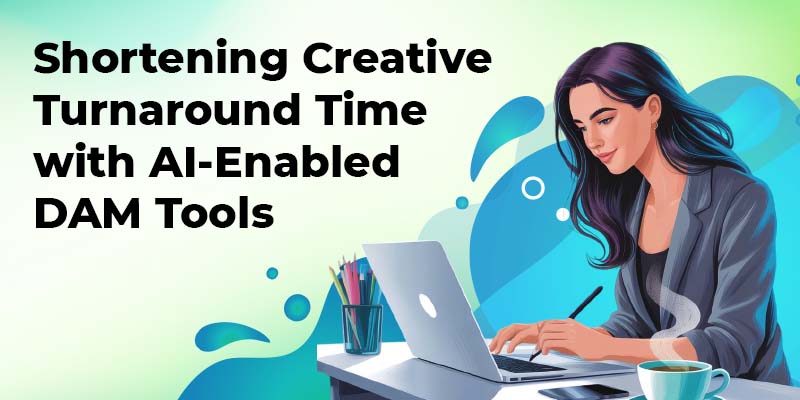
By Ralph Windsor of DAM News
Article Preview:
Timeliness has become one of the primary metrics by which marketing and content operations are measured. In an era of fast-paced digital campaigns, agile product launches and regionally staggered activations, enterprises must be able to create, adapt and publish assets at speed and without compromising on quality or brand integrity. The traditional trade-off between speed and control is no longer acceptable. Stakeholders expect both.
The ability to shorten creative turnaround time is therefore a key driver for DAM adoption and an area where AI-assisted tools have begun to deliver demonstrable value. By reducing the burden of repetitive tasks, generating relevant content and enabling layout and language adaptation at scale, AI can significantly accelerate the localization process. But this can only happen when applied judiciously – and always under the guidance of human users.
Where Time is Lost
To understand how AI assists with creative turnaround, it is helpful to identify where time is commonly lost in DAM workflows. These include:
- Manual adaptation of layouts: Rebuilding variants for different languages, screen sizes or formats consumes design resources and introduces risk.
- Asset discovery and reuse: Users often struggle to find suitable existing content, leading to redundant production efforts.
- Copy localization: Translating and validating text across multiple languages involves coordination across several teams or agencies.
- Visual substitution: Selecting appropriate imagery for each region, channel and message often requires multiple approval layers.
- Feedback and sign-off cycles: Lack of visibility or clarity in approval workflows causes delays and rework.
Each of these bottlenecks is made worse when assets must be deployed simultaneously in multiple markets. A single delay in one region can cascade into broader campaign disruption, especially where launch dates are fixed.
Efficiency through Reusability
One of the foundational principles of DAM is the ability to reuse and repurpose assets. AI enhances this by helping users identify not only what has been used before, but what is most likely to succeed in the current context.
For example:
- A user creating a landing page for a new product in Spain can be shown similar pages created for previous launches in Italy or France and with language, imagery and layout automatically adapted.
- A regional marketer preparing an Instagram story is offered brand-compliant templates, imagery tagged for cultural appropriateness and AI-suggested hashtags or captions based on campaign goals.
This kind of content-aware assistance removes bottlenecks and other forms of friction from the creative process. It allows users to focus on message and audience, rather than wrestle with formatting or approval requirements.
Would you like an executive summary on this series?
Download an easy-to-scan free executive summary here with all the key information.

